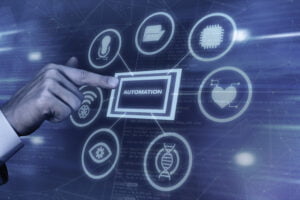In today’s fast-paced industries, real-time data analysis has become essential, especially in test and measurement. This process involves analyzing data as it’s generated, enabling quick insights and decision-making. Unlike traditional batch processing methods, the real-time analysis offers immediate responses to data, crucial for industries where swift action is paramount. In this post, we’ll explore the importance, challenges, technologies, applications, and future trends of real-time data analysis in testing and measurement, helping organizations optimize their processes for greater efficiency and accuracy.
The Need for Real-Time Data Analysis
In today’s dynamic business environment, the need for real-time data analysis in testing and measurement cannot be overstated. Traditional batch processing methods, while effective in some scenarios, often fall short in industries where immediate insights are essential for success.
Real-time data analysis fills this gap by providing instantaneous feedback on the performance, quality, and functionality of systems, products, and processes.
One of the primary drivers for real-time data analysis is the ever-increasing pace of technological advancement and innovation. As systems become more complex and interconnected, the ability to monitor and analyze data in real time becomes crucial for detecting anomalies, identifying trends, and optimizing performance.
Industries such as telecommunications, automotive, aerospace, healthcare, and manufacturing rely on real-time analysis to ensure the reliability, efficiency, and safety of their products and services.
Furthermore, real-time data analysis enables organizations to respond quickly to changing conditions and emerging challenges. Whether it’s detecting network congestion in telecommunications, diagnosing faults in automotive systems, or identifying defects in manufacturing processes, real-time analysis allows for immediate action to be taken, minimizing downtime, reducing costs, and enhancing customer satisfaction.
Moreover, in an era where data is increasingly recognized as a strategic asset, real-time analysis offers a competitive advantage.
By harnessing the power of real-time data insights, organizations can make better-informed decisions, optimize processes, and capitalize on opportunities more effectively than their competitors.
Technologies Enabling Real-Time Data Analysis
Real-time data analysis in testing and measurement is made possible by a variety of cutting-edge technologies that empower organizations to process, analyze, and act upon data in real-time. These technologies play a crucial role in enabling the rapid insights and decision-making required to optimize performance, ensure quality, and mitigate risks across various industries.
1. Streaming Analytics Platforms: Streaming analytics platforms are at the forefront of real-time data analysis, allowing organizations to ingest, process, and analyze large volumes of streaming data in real time.
These platforms leverage distributed computing architectures and parallel processing techniques to handle the high velocity and volume of data generated by modern systems and sensors. Examples include Apache Kafka, Apache Flink, and Amazon Kinesis.
2. Edge Computing: Edge computing brings computation and data storage closer to the data source, reducing latency and enabling real-time analysis at the network edge.
By processing data locally on edge devices or gateways, organizations can minimize the need to transmit data to centralized servers for analysis, thereby improving responsiveness and efficiency.
Edge computing technologies such as edge servers, gateways, and edge AI processors are instrumental in supporting real-time analysis in distributed environments.
3. Internet of Things (IoT) Sensors: IoT sensors play a pivotal role in capturing real-time data from physical assets, infrastructure, and environments.
These sensors collect a wide range of data, including temperature, pressure, vibration, and location, providing valuable insights into the health, performance, and behavior of assets in real time.
With advancements in sensor technology and connectivity, organizations can deploy IoT solutions to monitor and analyze critical parameters in real time, enabling predictive maintenance, condition monitoring, and asset optimization.
4. In-Memory Computing: In-memory computing technologies enable organizations to store and process data in random-access memory (RAM) instead of traditional disk-based storage, resulting in faster data access and analysis.
By leveraging in-memory databases and caching techniques, organizations can perform complex analytics on large datasets in real time, accelerating decision-making and reducing time-to-insight. Examples include Apache Ignite, SAP HANA, and Redis.
5. Machine Learning and Artificial Intelligence (AI): Machine learning and AI techniques are increasingly being integrated into real-time data analysis workflows to automate decision-making, detect patterns, and predict future outcomes.
These technologies enable organizations to extract actionable insights from streaming data, identify anomalies, and optimize processes in real time. Examples include real-time anomaly detection algorithms, predictive maintenance models, and adaptive control systems.
6. High-Performance Computing (HPC): High-performance computing technologies provide the computational power required to process and analyze large volumes of data in real time.
By leveraging parallel processing architectures and specialized hardware accelerators, organizations can perform complex simulations, numerical analysis, and modeling tasks with unprecedented speed and scalability.
HPC solutions are particularly prevalent in industries such as aerospace, automotive, and scientific research, where real-time analysis is essential for decision-making and innovation.
Applications of Real-Time Data Analysis in Test & Measurement
Real-time data analysis revolutionizes the way organizations conduct test and measurement activities, offering immediate insights into the performance, quality, and functionality of systems, products, and processes.
Across various industries, real-time analysis enables proactive decision-making, predictive maintenance, and optimization of critical parameters. Here are some key applications of real-time data analysis in test and measurement:
1. Quality Assurance and Monitoring:
Real-time data analysis plays a crucial role in ensuring the quality and reliability of products and systems.
By continuously monitoring key performance indicators (KPIs) in real time, organizations can detect deviations from expected norms, identify potential defects or malfunctions, and take corrective actions promptly.
Whether it’s monitoring production lines in manufacturing facilities, analyzing network traffic in telecommunications infrastructure, or evaluating the performance of automotive systems during testing, real-time analysis helps organizations maintain high standards of quality and consistency.
2. Predictive Maintenance:
Real-time data analysis enables predictive maintenance strategies, allowing organizations to anticipate equipment failures or degradation before they occur.
By analyzing real-time sensor data, equipment health metrics, and environmental conditions, organizations can detect early warning signs of potential issues, such as abnormal vibrations, temperature fluctuations, or fluid leaks.
Predictive maintenance not only reduces unplanned downtime and maintenance costs but also extends the lifespan of critical assets, maximizing operational efficiency and productivity.
3. Performance Monitoring and Optimization:
Real-time data analysis facilitates continuous performance monitoring and optimization across various domains, including telecommunications networks, industrial processes, and energy systems.
By analyzing real-time performance metrics, organizations can identify bottlenecks, inefficiencies, and optimization opportunities, enabling them to fine-tune processes, allocate resources effectively, and improve overall performance.
Whether it’s optimizing network bandwidth utilization, fine-tuning production parameters in manufacturing, or balancing energy consumption in smart grids, real-time analysis helps organizations achieve peak performance and efficiency.
4. Fault Detection and Diagnostics:
Real-time data analysis aids in the early detection and diagnosis of faults or anomalies in complex systems and processes.
By analyzing real-time sensor data, system logs, and historical trends, organizations can identify deviations from normal operating conditions, pinpoint the root causes of issues, and initiate timely corrective actions.
Whether it’s diagnosing faults in automotive engines, detecting cybersecurity breaches in IT networks, or identifying equipment failures in industrial plants, real-time analysis enables organizations to maintain operational integrity, reliability, and safety.
5. Process Optimization and Control:
Real-time data analysis facilitates dynamic process optimization and control, allowing organizations to adapt quickly to changing conditions and requirements.
By continuously monitoring process variables, analyzing real-time feedback, and applying control algorithms, organizations can optimize process parameters, regulate system behavior, and achieve desired outcomes in real-time.
Whether it’s controlling the temperature of a chemical reactor, adjusting the speed of a manufacturing assembly line, or optimizing the routing of vehicles in logistics operations, real-time analysis empowers organizations to achieve precise control and efficiency in their processes.
Conclusion
Real-time data analysis revolutionizes test and measurement practices, offering immediate insights into performance, quality, and functionality. From quality assurance to predictive maintenance, fault detection, and process optimization, real-time analysis empowers organizations to make proactive decisions and ensure operational excellence. By embracing real-time analysis capabilities, organizations can stay competitive, mitigate risks, and drive innovation in today’s dynamic business landscape.












